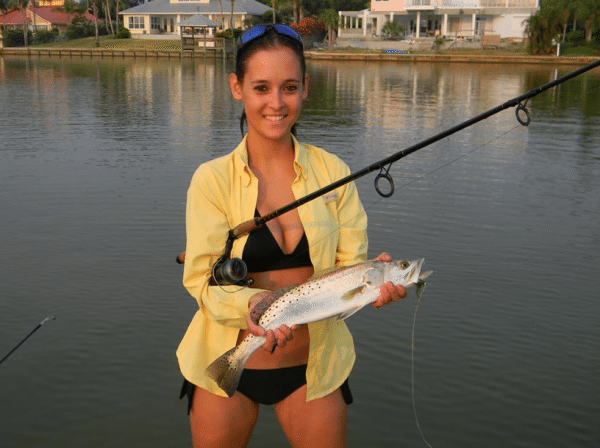On April 16, the California Department of Toxic Substances (DTSC) announced it would seek to ban many common items of lead fishing tackle in that state as part of Gov. Jerry Brown’s Green Chemistry Initiative.
The department justified its decision in a work plan that stated, “More than one million Californians fish recreationally. Together, these anglers may lose a significant amount of fishing and angling equipment into the environment. Of particular concern are products such as fishing weights and sinkers made from lead that are used to add weight to a fishing line, lure or hook. Lead poisoning associated with the ingestion of lead fishing weights has been well documented in a variety of bird and animal species around the world.”
Efforts to federally ban lead fishing tackle preceded DTSC’s announcement by several years. In August 2010, the Environmental Protection Agency was petitioned by the Center for Biological Diversity and four other organizations to ban all lead in fishing tackle under the Toxic Substance Control Act (TSCA). But that November, the EPA rejected the petition, stating, “Petitioners have not demonstrated that the requested rule is necessary to protect against an unreasonable risk of injury to health or the environment, as required by the TSCA.”
The EPA also cited state-specific actions and the increasing education and outreach activities being undertaken, stating that those actions “… call into question whether a national ban on lead in fishing gear would be the least burdensome, adequately protective approach to address the concern, as called for under TSCA.”
Despite the EPA’s findings that a national ban is scientifically unjustified, and despite admitting in public hearings that it has no scientific evidence showing lead is an environmental problem in California, DTSC continues to move forward with its decision to ban lead tackle in California. Unfortunately, a lead ban would almost certainly accelerate the state’s steady decline in fishing participation. That, in turn, would affect jobs and state revenue.
According to California’s Department of Fish and Wildlife (DFW), between 2002 and 2007, freshwater and saltwater fishing in the state declined 37 percent and 22 percent, respectively. In fact, only 4.3 percent of California adults fish. No other state has lower participation.
The California Sportfishing League (CSL) says while many factors have contributed to sportfishing’s decline, “…there is no question that California’s tough regulatory environment has accelerated this decline. As a direct result of California’s regulatory regime and the power of anti-sportfishing organizations, sportfishing’s positive economic impact on businesses and communities has diminished.”
The California Coastal Conservation Association (CCCA) and the American Sportfishing Association (ASA) agree and have evidence that supports that contention. The results of an angler survey released by the two organizations on May 25 outlines the economic issues associated with requiring California anglers to switch to non-lead tackle such as tungsten and tin. Titled “Effects on the Ban on Traditional-Based Tackle for Fishing in California on Angler Participation and Associated Economic Measures,” the report, produced for ASA by Southwick Associates, demonstrates that banning traditional fishing tackle will have a negative impact on fishing participation, which contributes $4.9 billion annually to the state’s economy.
Bill Shedd, chairman of the CCCA, said, “Sportfishing is an important economic generator for our state, and banning lead tackle, as currently being considered by the State of California, is another burden that would increase the cost of fishing, hurt anglers and cost our economy millions of dollars in lost revenue and almost 2,600 jobs.”
Some of the key findings of the survey include:
A ban on lead fishing tackle would further reduce angler activity in California, which would in turn negatively impact the recreational fishing industry and those whose livelihoods depend on it.
A survey of tackle manufacturers indicated that the price impact of producing lures and terminal tackle with lead substitutes would double costs on average.
Only 25 percent of manufacturers surveyed indicated that it was even technically feasible to currently switch to non-lead substitutes.
If a lead ban were to cause prices to double for lures and terminal tackle, the report says that approximately 5 percent of anglers would leave the sport or nearly 80,000 anglers.
The surveys also suggests that of the anglers who continue to fish, 18 percent would fish fewer days, each fishing 21 percent fewer days on average.
Combined with anglers leaving the sport, this would reduce total California angler days and expenditures in recreational fishing by 2 million fewer angler days and $173 million in lost revenues.
The $173 million in recreational fishing revenues currently supports 2,582 jobs, $113.6 million in salaries and wages, $24.2 million in state and local tax revenue and $26.4 million in federal tax revenues.
“This report shows that, in addition to the direct economic losses to recreational fishing-dependent businesses, fish and wildlife conservation programs in California would suffer as prices for tackle increase and overall fishing expenditures suffer,” said Scott Gudes, ASA’s vice president for government affairs. “Not many people realize it is anglers who pay for California’s fishery conservation programs through fishing tackle excise taxes and license fees. A ban on lead tackle is not based on science. Anglers and conservation programs would be the losers.”
“Fishing our Pacific coastal waters from San Diego to the Oregon border is part of what makes this state great,” Shedd concluded. “It is part of our heritage. We need to start adopting angler-friendly policies in California and not start regulating what’s in an angler’s tackle box.”
